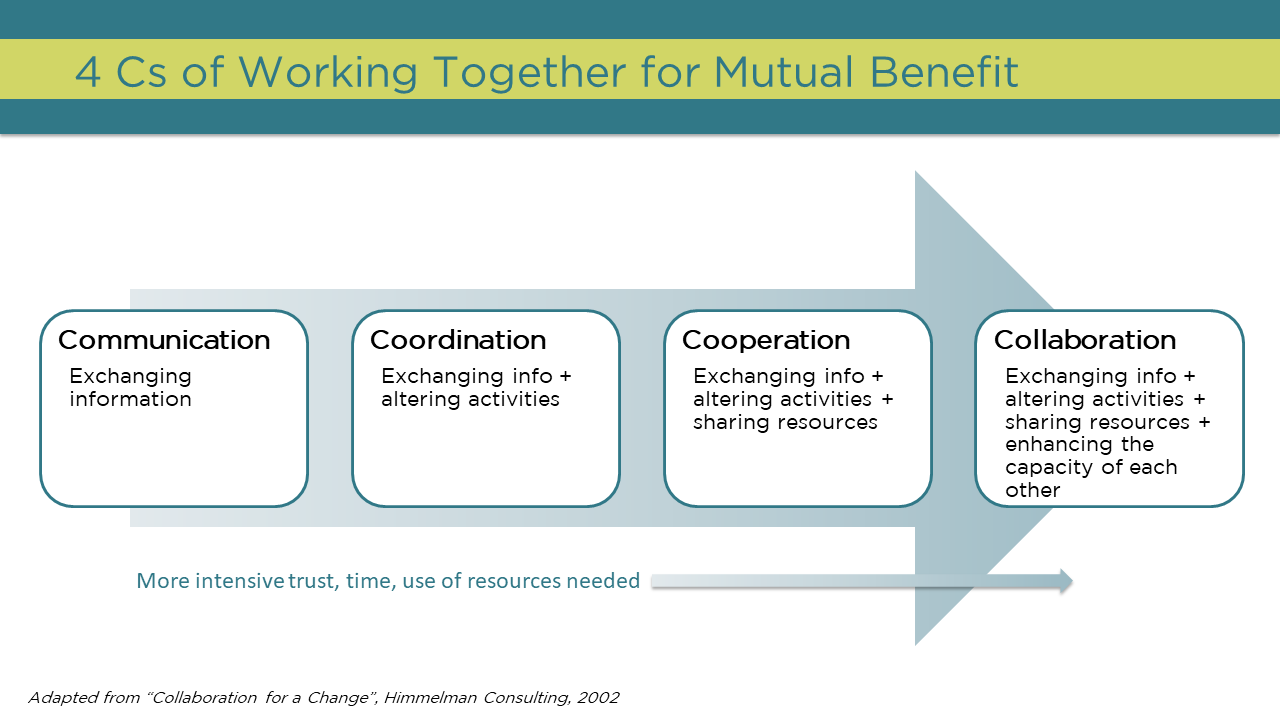Unit 1: Getting Started
Your list of partners in delivering family philanthropy services will include professional advisors, other allied experts, resources such as NCFP, technology vendors, and more. This unit helps you think about your landscape of key partners.
TUNE-IN (4 hours and 4 minutes): Key Partnerships
Using examples from companies, this Coursera course describes different ways to think about partners, suppliers, and allies and their potential impact on the cost structure of your services.
READ: Types of Partnerships

The word “partner” has many meanings, leading to differing expectations for partnerships. Nonprofits and other institutions often simplify the options into “4 Cs”—communication, coordination, cooperation, and collaboration—described in this graphic. Consultants working with the Business Model Canvas and similar tools describe these options:
- Buyer-Supplier – assuring reliable supplies or products through defining expectations around trust, quality, and commitment. These are often fairly transactional relationships, though an organization could develop a strategic alliance with a vendor to co-develop a mission-critical service (e.g. a customized function on your donor portal).
- Collaboration – a loose relationship involving great autonomy and no permanent organizational commitments or combined services.
- Strategic Alliance between non-competitors – a formal agreement, even if a simple one, to work toward common objectives, often involving shared decision-making power over products, services, or resources.
- Joint Venture – creating an LLP or other entity that can be more effective or profitable than if the founders tried doing it on their own.
- Coopetition – an agreement between competitors, perhaps to grow the overall market for services, spread risk, deal with public policy issues, or serve an important shared client.
READ: The Relationship Ecosystem: Mapping Partnership Resources for Maximum Value
 Your foundation exists within a complex, adaptive and self-organizing system of interrelated individuals and organizations. Dr. Enette Pauzé, CEO of the Level 8 Leadership Institute, writes about developing a clear picture of your partnerships using an ecosystem map.
Your foundation exists within a complex, adaptive and self-organizing system of interrelated individuals and organizations. Dr. Enette Pauzé, CEO of the Level 8 Leadership Institute, writes about developing a clear picture of your partnerships using an ecosystem map.
DO: Partner Evaluation Matrix [members only]
This matrix can help you create internal clarity around the type of relationship you want with a prospective partner and the why, what, and success factors of the mutual value exchange.
